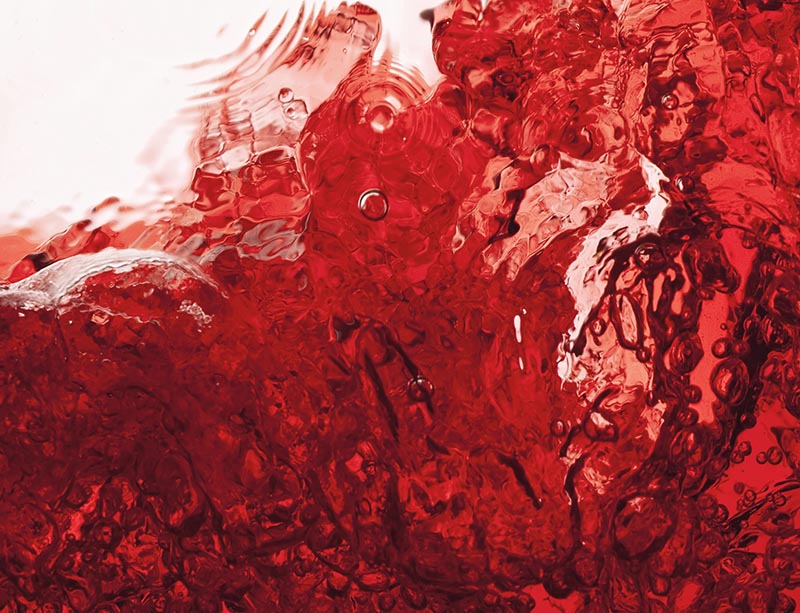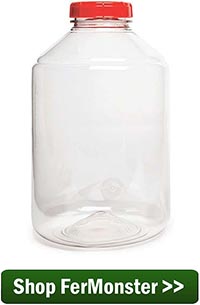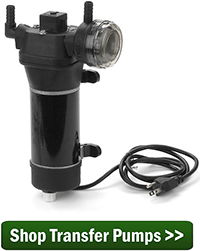 I inadvertently put too much sulfite in my wine must. Packaged advised 1/4 teaspoon PER 6 GALLONS OF MUST. I misread and added 1/4 teaspoon per gallon of must (6). My wine yeast did not ferment. All else was as it should be (SG, temp, and acid level). Is there anything I can do besides chalk it up to a learning experience and dumping it down the drain. It’s been a week and do not want it un-fermenting much longer. Please respond at your earliest convenience.
I inadvertently put too much sulfite in my wine must. Packaged advised 1/4 teaspoon PER 6 GALLONS OF MUST. I misread and added 1/4 teaspoon per gallon of must (6). My wine yeast did not ferment. All else was as it should be (SG, temp, and acid level). Is there anything I can do besides chalk it up to a learning experience and dumping it down the drain. It’s been a week and do not want it un-fermenting much longer. Please respond at your earliest convenience.
Name: Mary S.
State: Wisconsin
—–
Hello Mary,
This happens more often than you might think. Many times we’ve had winemakers contacting us telling us they think they’ve ruined their wine because they put too much sulfite in it, and many times we’ve helped them to get their wine, and its fermentation, back on track. So, don’t think that your wine is a loss. There is hope.
The trick is to give the sulfite an opportunity to leave. Fortunately for you, the sulfites want to leave. You just need to let it. What I mean by this is the free sulfite that is in the wine wants to dissipate into the air and go away. You just need to give it an opportunity to do so. The easiest way of doing this is to splash the wine. And, I mean seriously splash the wine. Splashing is the friend of any wine that has too much sulfite.
 We always recommend siphoning the wine from one fermenter to the next and then back again. When the juice comes out of the siphon hose, allow it to splash against something. Let it to cascade down the sidewall of the vessel, or let a sanitized object float in the fermenter as the fermenter is being filled, and splash the wine against that.
We always recommend siphoning the wine from one fermenter to the next and then back again. When the juice comes out of the siphon hose, allow it to splash against something. Let it to cascade down the sidewall of the vessel, or let a sanitized object float in the fermenter as the fermenter is being filled, and splash the wine against that.
Once you have done this, add another packet of wine yeast and wait 24 hours. If the fermentation starts up, then great. The wine is saved. But, if the fermentation does not show any signs of life after 24 hours, you will need to repeat the splashing process, and then add another packet of wine yeast, and wait 24 hours, again. You can keep repeating this process until you’ve over come the abundance of sulfite in the wine.
You can keep adding packs of wine yeast as necessary. This will not affect the resulting wine in any way.
You may be wondering if the wine will start oxidizing from all the splashing. The answer is, no. Sulfite acts as an antioxidant. All of the gas releasing from the wine during the splashing will protect the wine from any oxidative processes.
 Please realize that whenever you have too much sulfite in wine, it’s just a matter of getting the free SO2 gas to release and go away. It’s nothing more than that. There have been some situations where the dosage was so high that it has reached a point of no return for the wine, but based on your situation as you described it above, I don’t think there is any way you will lose this wine if you do the siphoning and splashing a prescribed.
Please realize that whenever you have too much sulfite in wine, it’s just a matter of getting the free SO2 gas to release and go away. It’s nothing more than that. There have been some situations where the dosage was so high that it has reached a point of no return for the wine, but based on your situation as you described it above, I don’t think there is any way you will lose this wine if you do the siphoning and splashing a prescribed.
Happy Wine Making,
Ed Kraus
—–
Ed Kraus is a 3rd generation home brewer/winemaker and has been an owner of E. C. Kraus since 1999. He has been helping individuals make better wine and beer for over 25 years.

I have a related question. Due to several extra rackings (as a result of having to reduce a high acid content) I have inadvertently added a total of about 20 campden tablets to several batches of wine. I assume that the sulfur dioxide gases have dissipated over the year long process, but is there a residual taste (bitterness, tanginess,etc.,) associated with an excess of sodium metabisulfite ? Is there something left in the wine after the gas dissipates ? thanx, Mike
Do you have a recipe for Meade Wine? The vikings use to make it and Meade was their drink of choice.
Michael, when you add metabisulfite of any kind to a wine, some of the sulfite will bond to the wine permanently. It will have no effect on the yeast or fermentation. It will not protect the wine in any fashion. It is just there. Depending on the acidity level of the wine, this could be anywhere from 40% to 70% of the sulfites. In regular doses throughout the course of making a wine it is not enough to affect the flavor of the wine, but in extreme cases it could. I have not tasted a wine with this defect, but my guess is it would add a salty taste to the wine, however I do not know. Here is another blog post that discusses this a little more:
When Do I Add Campden Tablets To My Homemade Wine?
http://blog.eckraus.com/wine-making-tricks-and-tips/add-campden-tablets-to-wine
Glendon, you can find a Mead recipe at the following link on our website:
Mead Wine Recipe
http://www.eckraus.com/winerecipes/meadwine.pdf
I made 6 1/2 gals of wine and put to much potassium metabisulfite in my wine, I put 3 Tablespoons in it, what do I do.. Thanks Charlie
Charlie, most of the information that you requested is in this article. Basically, what you want to do is rack the wine in a splashing manner to get some of the sulfites to leave the wine.
What if it was put in post fermentation, would there be any reason to need to reduce sulfite levels?
Adam, as long as you can’t taste or smell the sulfites there is no need to try to reduce the level.
I used a quarter tsp of potassium metabisulfite per gallon to my must both a red and a white. When I added it to the red, I suspected an error immediately since it bleached the juice. Before I found this, I gave up on it as un-salvagable, but after several days sitting in my basement, I decided to try simply stirring it vigorously, I measured the free SO2 content and it was over 100, about twice the usual amount recommended for reds at the PH and added the yeast, fermentation began, but free SO2 is a bit high so I will continue to aerate it as it ferments each time I punch down the cap. The whites were put into the fridge to macerate, so I took them out, pressed them and measured the SO2 in the juice; it was too high for the Free SO2 Test Titrettes I have to measure. I will beat the juice up some more and see if I can get it down to something closer to the desired value. But anyway, Thanks I had given up hope and the only reason I did not throw the must out was sloth.
I just did the same thing and wondering how it went for you? I’m ready to throw it away…
what was the final result of your red. I just did the same thing and was about to pitch it until I saw your post. Any help would be appreciiated…
Hi
if you add earlier potassium metabisulfite in my wine..
what will happen..?(after a week)
John, if you added sulfites before the fermentation completed, you may need to add another packet of yeast. Sulfites can damage the yeast.
thank you..
I add another packet of yeast but couldn’t start the fermentation again..
what can I do.?
Take a hydrometer reading to see if it’s done fermenting. If so, there’s nothing to do but rack. If there’s room to ferment, than try a yeast starter.
I add another packet of yeast but couldn’t start the fermentation again..
what can I do.?
I am getting ready to bottle up raspberry wine. When we just racked it I could smell like a musty smell and not raspberry at all. I also tasted some of my berries in the garden. they were huge and beautiful but one would taste just like the smell of the wine and the next one like it should. The wine I think is ready to bottle. I was going to buy some flavor and no doubt would add sugar to my taste. I actually do not want to taste it due to the smell. Is the wine done for?? First time I had this problem. I made blueberry and blackberry also and I do not notice that smell. Weird on the taste of fresh berries also. Do I dump five gallons of wine or can it be fixed.
Diane, normally when a wine has a musty odor, it is due to mold or mildew forming in the wine. You do not mention if you added sulfites prior to adding the yeast, this would have destroyed any bacteria that may have been on the fruit. This could also occur with improper sanitation or too much head space in the fermenter. If the growth in only on the surface of the wine, you can add 1.5 campden tablets for each gallon to prevent further growth. If it is all throughout the wine, there is nothing you can do to save it.
I accidentally put too much stabiliser in my wine after fermentation finished which has affected the taste of the wine what can I do to remove it
Hi, I have just had to throw out 12 L of mango (from peeled and crushed mango) and raisin wine after 5 days fermentation. Unfortunately, the must, must have been contaminated with bacteria which caused the ferment due to the yeast to stop after 4 days and the odour and flavour of the must was bad. Although I have successfully made this wine in the past without any problem I normally sterilise the must by pouring 5 L of boiling water over the mango pulp and raisins in a 25 L fermentation bucket and let cool before adding, pectinase, citric acid, yeast nutrient and yeast. Clearly, this did not work on this occasion and I am wondering if adding sodium metabisulphite (with or without boiling water step first?) would be sufficient to prevent this happening in the future and how much (tsp or grams per 10 L) of metabusulphite should be added to the must for this purpose?
Iain, yes, adding sulfites prior to fermentation is what you should be doing. The reason that you add sulfites prior to fermentation is to destroy and wild yeast or bacteria that may be on the fruit. For more information, please take a look at the article posted below.
Why You Should Use Sulfites
https://blog.eckraus.com/using-sulfites-in-wine-making
How long after the first packet of yeast can you add a second packet of yeast?
Nicholle, there is no set time to add an additional packet of yeast, you can add it at anytime.
In your recipe for mead you do not mention adding water , just13 lbs of honey . I looked; by there. 13 lbs of honey won’t fill a 5 gallon carboy. Did I miss that or is it just assumed by the author that anyone would know that water is needed?
Glen, we apologize for any confusion. Yes, you need to add water to bring the volume up to 5-gallons when using our Mead recipe.
Will a degasser work in place of the splashing method? I put too many Camden tablets in during first racking from primary to secondary fermenter..
Tim, racking in the splashing manner is the best way to get the free sulfites to leave the wine.
Hello,
I made a 4 gallons of red wine. Before first fermentation i added 4 tablets of sodium bisulfite and waited 24 hours. After that i added the yeast and when the level of suger reached 1.02 i started the second fermentation and again added but this time 3.5 tablets due to losing some of the wine for racking. After 10 days i racked my wine again and added 3 tablets. There was a little air space that caused flower of wine so i syphoned and racked the wine again after two days only and again 3 tablets were added. Before doing the last racking i tasted the wine it was soury little bit. Did i ruined my wine by any chance? Or should i keep it like that for several weeks and then taste it again? And another question, how can i topup my wine bearing in mind that i don’t have any kind of commercial wine or liquor in my region?
Thank you,
MD.alkout, if the wine is sour, it could be high in acid. Have you tested the acid level of the wine? At this time, because typically you had campden tablets 3 times from start to bottling, i do not think that is what you are tasting.
How To Fix A Sour Wine
https://blog.eckraus.com/how-to-fix-a-sour-wine
I have a sort of related sulfite question. I’m making your recipe for fig wine for the second time (first batch is in the secondary fermenter, smooth sailing so far). I added Potassium Metabisulfite instead of Campden tablets both times. With the second batch I added it at the end instead of near the beginning and it turned the glorious pink fig juice a pale yellow color. I used 1/2 tsp for the 5 gallons as suggested on the package. Is this normal, or have I ruined it? Will the color turn back as the sulfite goes away?
Sulfite can change the color of a wine, but it is usually temporary. With time it will turn back. This reaction mostly occurs with wine musts that are lower in acid than higher in acid, so this could be an indication that your wine must acidity needs checking.
Andrea, you are going to want to go ahead and add any water needed if any and as the article says, rack the juice in a splashing manner to try to get the sulfites to leave the juice.
Ok i did over due it on apple cider 18 tabs to five gallons – pitched yeast nothing happened.
Diluted cider with another 5 gallons pitched more yeast – nothing. after reading this article i poured the cider into a clean bucket being sure to make lots of splashing and bubbles.Poured it back into the carboy again via a siphon and again did lotsa a splashing. Pitched yeast again as instructed. Did that as well with the second carboy but this time i used two other carboys and filled half way to leave room for gases to escape. I will keep that up till they start bubbling. Fingers crossed.!
I will post again when and if it works Thanks for this info.
Hello
have the chickpea product, which is quickly spoiled by lactic bacteria, and it was treated by adding sodium meta sulfite, but it got bad taste
How to treat the problem of taste while maintaining the effectiveness of sulfite
What if the extra sulfite was added just before clearing (with sparkloid), will the splashing be necessary? Or will the sparkloid will take the sulfite out?